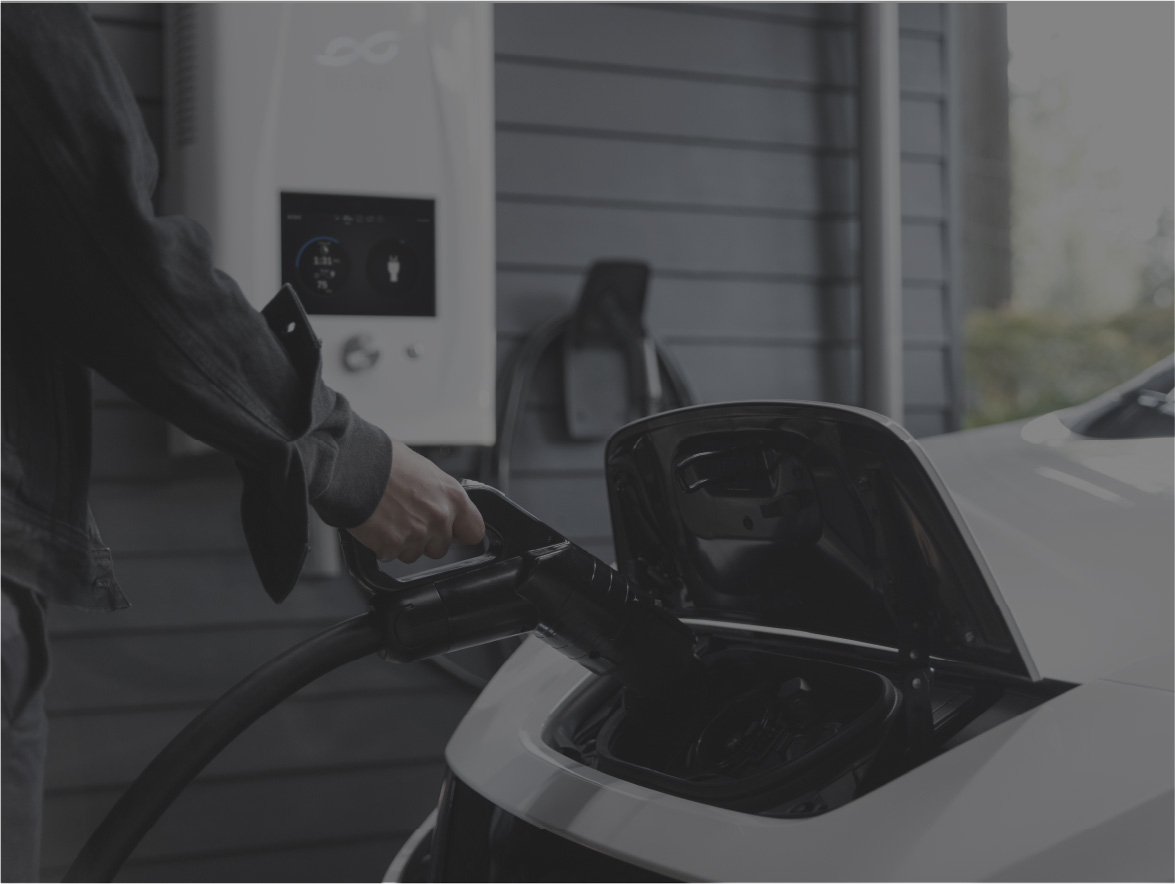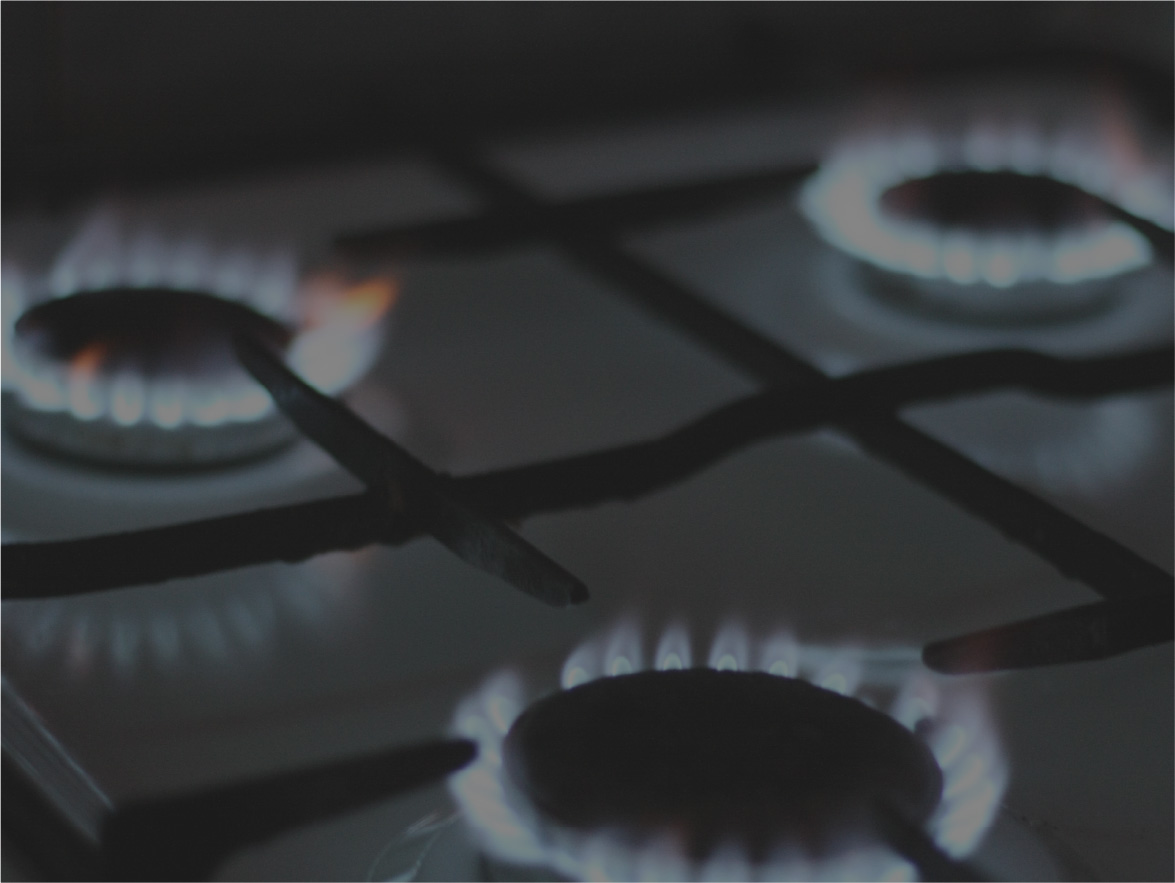Our Industries
At Standard Rubber Products, we have served original equipment manufacturers with high-quality materials, components and subassemblies since 1951. We provide creative die-cut products and unparalleled service, with special expertise in gaskets.
We are recognized as a leading converter and supplier of custom-fabricated products and have earned preferred converter status with industry-leading suppliers. Our company is committed to continuous improvement in every aspect of our operations.
Because we do custom work, the name “Standard” might not seem to fit. But it does. We treat every order as an opportunity to meet our customers’ technical requirements and business needs, to exceed their expectations … to set a higher standard.


Industrial
Many manufacturers of durable goods become household brand names; other OEMs make products consumers never see. These products are used in commercial and industrial applications that support other manufacturing and service businesses. They help keep the economy running. We serve this market with custom gaskets and seals that withstand constant use under demanding conditions.
We support applications that include sealing, electrical enclosures and insulation, EMI shielding, display protection, flame barriers and vibration dampening. We work with materials that include 3M adhesives and tapes, PORON polyurethane gaskets, BISCO silicone rubber and silicone foam gaskets, custom plastic and film gaskets, seals and insulators made with Nomex, Formex and 3M FRB materials, Griswold open cell sponge and Ensolite closed cell foam rubber gaskets, and sponge gaskets from Norseal, Griswold and BISCO.
Whether you’re looking for a converter to help in the design stage or you’re ready to go, we want to hear from you. We have extensive inventories of elastomeric materials and priority status with leading suppliers, plus technical and real-world expertise to help you solve any kind of gasketing problem. Our experience is broad enough and deep enough that we’re confident we can help you solve any sealing or gasketing problem — even if you don’t see your industry in our examples.

Electronics
Electronics manufacturing is more than just one industry; products in every segment include electronic components. Whether a device is the finished product a consumer uses directly or a component within another product, it has similar needs:
Sealing: Although electronic devices have few or no moving parts, they are still vulnerable. Dust and moisture can cause overheating, electrical shorts and other problems. We regularly help OEMs protect the electronics in their products against contamination and damage.
Thermal management: Most electronic components are designed to fit in limited spaces; that makes precision a critical factor in fabricating custom gaskets. It also increases the importance of keeping heat where it belongs. We offer thermal management tapes that dissipate heat from sensitive components and devices, and allow fast and accurate positioning in assembly.
EMI and RFI shielding: Electronic devices are engineered to communicate — but sometimes nearby components cause interference that affects performance. We create RFI and EMI gaskets that shield against signal interference and convert electrically conductive foils, foams, rubber and film to provide other forms of support, from cushioning against shock to redirecting heat.
Electrostatic discharge: In the manufacturing process, electronic devices can be damaged or disabled by static electricity. We offer anti-static and low-static polyimide and polyester products that reduce or eliminate electrostatic discharge (ESD) in applications such as conformal coating, reflow soldering and placing components in anti-static bags.

Power/Utilities
Leaders in energy production and distribution are looking for ways to improve efficiency and reduce waste. No matter the source — oil and gas, hydroelectric, nuclear — we have helped them with custom sealing and gasketing components designed to control the flow of air, water and heat.
Most power utility businesses operate on a large scale with extensive in-house capabilities. They can make their own parts. But they call on us because we stay up to date on the latest developments from industry-leading suppliers and are among the first to try out new products. We built our reputation on technical expertise, creative problem solving and dedication to customer service.
No two applications for the energy industry are exactly alike, so here’s a list of some materials we’ve used to help our customers meet their challenges.
- Adhesive transfer tapes
- Insulating tapes
- Foam mounting tapes
- Foil tapes
- Installation tapes
- Reclosable fasteners
- Polyester and protective films
- Structural adhesives and sealants
- Thermal interface materials
- VHB tapes
If you have a technical requirement that calls for custom gaskets or seals, get in touch. It can be an industrial-scale air flow concern, a high-precision application involving electronics, or anything in between. We’ll apply our knowledge of adhesive materials and our creative problem-solving skills to help you find an answer that works.

Renewable Energy
Solar arrays convert light through photovoltaic processes; wind turbines use kinetic energy. They both generate electricity that can be used immediately or stored in batteries. Geothermal systems circulate a fluid medium through a circuit with a constant temperature differential. They all draw on the forces of nature to create energy sources that can be put to productive use. And they all make extensive use of gaskets and adhesive seals.
Each renewable energy source has unique needs. Most solar arrays are stationary while all wind-power generators have moving parts; geothermal systems are fixed but use pumps and fans. All these methods use specialized machinery with specific requirements. Their components and connections need protection from the same natural elements that drive them.
Custom gaskets protect electronic devices from dust and moisture; reclosable adhesive products provide secure mounting of parts that may need to be removed and replaced frequently; molded rubbers seal electrical connections against ingress by rain and snow. These measures help reduce the need for inspection and maintenance.
We provide reliable adhesives and make customized gaskets and seals for multiple customers in the alternative energy industry. From thermal interface materials to foam mounting tapes, conductive foil tapes to laminating adhesives, we can recommend the most appropriate materials for your needs. Our status as a preferred converter means we have a direct line to the latest research and the newest products for emerging applications.

Displays
Whether your screen is a wristwatch or a massive home theater display, you benefit from advanced LED technology. Modern screens have higher resolution, greater color fidelity and lower power consumption than ever. And there’s still room for improvement with display enhancement films. Benefits include:
Brightness: Specialty film increases brightness by up to 60%. Its prismatic structure recycles diffuse light into the backlight and directs the light through the LCD to increase brightness for the viewer. That can mean greater ease of use in bright settings, reduced power consumption, or both.
Comfort: Anti-reflective and anti-glare films improve screen viewing and color neutrality. The anti-reflective feature reduces ambient light reflection; anti-glare coatings diffuse mirror-like reflections that can disrupt a clear view of the display.
Convenience: Thin, non-conductive films provide display protection while allowing full responsive touch-screen capability.
Enhancement: Display enhancement films improve the brightness, energy efficiency, sunlight readability, contrast and durability of LCD displays. They also control light distribution, increase brightness and help prevent everyday damage to sensitive electronic equipment screens.
Protection: Display protection films are available as an anti-glare film, a clear hard-coated film or an anti-reflective film that combines display protection and viewing enhancement for improved screen clarity, even in bright lighting conditions. Hard coatings help improve durability and readability.
Security: Privacy filter films help restrict the visibility of displays. They allow users to view sensitive information securely while making the screen more difficult for unauthorized users to see.

Lighting
Light-emitting diode (LED) technology revolutionized residential, commercial and industrial lighting. LED fixtures are lighter, cooler, more durable and more energy efficient than the incandescent, fluorescent and halogen bulbs they replace. The newest LED lights even have greater color fidelity and stability than traditional light sources. LEDs are being used in more and more places every day.
Assembly: Manufacturers are discovering that carefully chosen adhesives are well suited for securing components in LED light fixtures. They can meet UL, NEMA and IPX compliance requirements and provide long, useful service.
Diffusion: Light from a single point source can be a distracting and unpleasant hot spot. Light-diffusing films help spread the same light source over a larger surface, making it more uncomfortable for users.
Cooling: Although LED lights run cooler per lumen produced, high-powered LED bulbs can generate significant heat. Die-cut thermal interface materials help draw heat away to extend bulb life.
Fire protection: When a powerful LED is used in an enclosed space or close to flammable materials, a die-cut flame barrier can help reduce the risk of overheating and fire.
Sealing: LED lights designed for outdoor or automotive use need protection from moisture and dust. Die-cut gaskets can seal fixtures and keep them secure in a wide range of temperatures.
Stability: LED enclosures used in high-vibration environments are susceptible to damage. Die-cut foams and damping materials can be added to LED enclosure designs to isolate vibration and improve stability.
Venting: Enclosures that are subject to pressure changes require ventilation, but still need to keep out water and dust. We can produce hydrophobic microporous vents to meet both these goals at once.

HVAC
Commercial and industrial heating, ventilation and air conditioning (HVAC) systems vary in size and complexity. Occupants expect buildings to be pleasant and safe, with temperature and humidity in a narrow comfort band, sufficient indoor air quality (IAQ) with minimal particulates, and with a high rate of air changes per hour (ACPH).
We make custom die-cut gaskets and seals for a variety of industries, including HVAC. Bring us your design or enlist our technical team to help you complete one. We’ll work with you to understand the problem you need to solve, the best approach to take and the most appropriate materials to use. Here are some examples of recent applications.
- Gaskets and sealing tapes for controlling movement of air and moisture
- Attachment tapes used in place of mechanical fasteners
- Insulation to meet regulatory requirements for thermal resistance
- Compression materials for isolating components and reducing vibration
- Foam insulation to protect components from excess heat
- Sound covers for acoustic enclosure of high-noise equipment
- Electrical insulation for safety in control modules and power supplies
- Aluminum foil tapes for transitions and pipe insulation protection
- Sheet metal damping to reduce duct vibration and noise
As a preferred converter, we have up-to-date training on advanced materials and direct access to leading suppliers. We thrive on creative and technical challenges — and our HVAC OEM customers know it. Tell us what you need and we’ll be ready to help.

Medical
Medical devices often contain electronics and are designed for use in both clinical and home settings. Even in normal conditions, they are subject to rough handling and need to be protected from liquids, dust, signal interference and physical shock from dropping.
We have served medical device manufacturers with gasketing, sealing and adhesive components. To date, we have only helped produce Class I devices — those with the lowest potential risk to the user. (Nearly half of all medical devices belong in this class; most are exempt from the strictest regulations.)
We provide gaskets, foams, adhesives and films that perform a variety of functions within medical devices: sealing enclosures against dust and moisture; shielding internal electronics from radio or electromagnetic interference; protecting displays and making them easier to see and read.

Automotive
The automotive industry started using adhesive products in manufacturing a century ago. An engineer at 3M developed masking tape to help carmakers create sharp, clean lines on two-tone paint schemes — a popular feature at the time. Ever since, automotive manufacturers have found more applications for adhesive products. Today, most of them fit in four categories:
Interior: Drivers and passengers expect to be protected from the elements. Door gaskets and window seals provide that protection. Sound and vibration dampening materials help reduce motion from the engine and suspension and noise from the road. Foam gaskets on components like displays, touch screens and air ducts reduce vibration and noise in the cabin.
Controls and displays: The instrument panel is the driver’s control center, providing a clear view of what the vehicle is doing. Gaskets and seals protect electronics against moisture and dust. EMI shielding materials reduce or eliminate signal interference. Light enhancement films help make displays legible.

Electric Vehicles
Electric vehicles depend on fast-charging, high-capacity storage batteries in large banks. These batteries are vulnerable to everything from electrical interference to overheating to physical shock. We provide components for thermal transfer, insulation, vibration absorption, shielding and more. Here are a few examples.
Thermal management: EV batteries can heat up while charging and in use. To prevent damage within the batteries and to surrounding components, battery banks need a means of thermal transfer. We produce thermal interface components to move excess heat efficiently away from battery cells and packs, improving both vehicle safety and battery life. Some heat transfer materials can also serve as dielectric barriers and insulators.
Sealing: Batteries used in electric vehicles are arranged in modules, usually frames containing multiple cells. For safe operation, these modules need to be sealed against intrusion by air, water and dust. In a crash, secure sealing helps prevent hazardous substances from leaking out. Our gaskets and seals for EV batteries provide reliable performance in a wide range of temperatures.
Shielding: EVs are controlled by electronics that can be susceptible to electromagnetic interference (EMI). To protect the control systems from stray signals generated by the batteries, manufacturers specify shielding materials around critical components. Our expertise includes making EMI shielding from foils, seals, pressure-sensitive adhesive materials and conductive elastomers.
Noise, vibration and harshness (NVH): Car makers want to provide a comfortable, smooth ride for drivers and passengers. The nearly silent operation of an electric motor draws attention to other sounds. Because EVs are built so differently from traditional gas-powered cars, they have unique requirements for isolating vibration and reducing noise transmitted from the road. We provide components made of damping materials that reduce motor, wind, road and auxiliary noises.

Appliances
Appliance manufacturers are always looking for ways to make their products more attractive. Sometimes that means adding features, but there’s a practical limit on how many functions consumers want. More often, the manufacturers work to improve product performance. We can help.
Noise, vibration and harshness (NVH): For highly mechanical machines such as washing machines, dishwashers and dryers, sound and vibration damping is a top priority. We make spacers, cushioning components, damping foams and foils to reduce sound output and improve user comfort.
Electrical insulation: Washing machines, humidifiers, dehumidifiers and many kitchen appliances hold water, making electrical isolation a challenge. To meet safety requirements and maintain customer satisfaction, manufacturers need to protect electrical systems from shock, damage and short circuits. We provide high-temperature, heat-resistant tapes and films to insulate motors and power sources.
Thermal management: When sensitive electronics are located close to heat sources, they need extra protection to prevent performance problems or failures. We make heat spreaders, gap pads and thermally conductive tapes to dissipate heat from power transistor or compressor components.
Sealing and gasketing: Any part of an appliance with a connection or user interface is likely to need sealing against ingress from water, food, soap, dust or dirt. We offer foam tapes and laminated foams for waterproofing, door and enclosure seals, cushioning for controls, display gaskets and more. We can recommend materials that resist temperature extremes, compression set, chemical and UV radiation.
Mounting: For appliances, the user experience is both functional and aesthetic. Manufacturers want their machines to perform well and to be visually appealing. We supply single-coated and double-coated tapes for mounting membrane switches and touch panels, and for bonding labels and name plates.
How can we help?
Please submit the form and a member of our team will be in touch with you shortly
